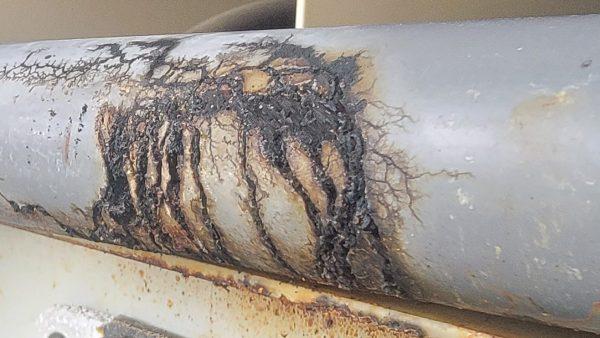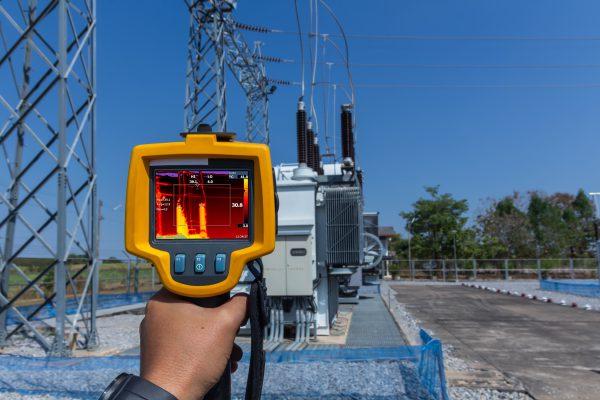News
The Highest ROI Maintenance Techniques to Maximize the Reliability of Your Utility-Scale Solar Investment
Prevent unexpected outages. Avoid costly equipment damage. Increase reliability.
THESE MAINTENANCE TECHNIQUES CAN YIELD A ROI OF OVER 20X
After performing electrical testing for over 70 utility-scale renewable energy projects in 17 states, tallying over 5GW of renewable energy (enough to power over 1M homes!), experts in the field have discovered which maintenance practices provide the highest ROI for utility-scale solar investments.
The following five electrical tests and techniques represent the most effective practices for preventing outages and increasing production, per dollar spent. These practices cover the majority of common equipment failure modes in the most efficient manner possible. All these techniques can be performed safely without requiring an outage at solar sites.
(1) ONLINE PARTIAL DISCHARGE SURVEY
Conducting an online partial discharge survey is highly recommended as the highest ROI technique, often overlooked by many maintenance providers who lack the necessary knowledge to employ this sophisticated technology. Statistics indicate that up to 90% of all medium voltage equipment failures occur due to partial discharge activity.

PARTIAL DISCHARGE
Partial Discharge is a partial failure of medium voltage or high voltage insulation, which can progress to complete failure over time, resulting in unplanned outages and equipment damage.
The good news is that partial failures produce signals that can be safely detected through a partial discharge test, while the electrical system remains in service.
By safely connecting passive specialized split-core current sensors around the grounded MV cable concentric shields, experts can record electromagnetic signals to detect and analyze dangerous partial discharge events in the MV terminations, cables, transformer windings, as well as in the MV breaker or MV switchgear assembly in applicable equipment design.
(2) DISSOLVED GAS ANALYSIS (DGA)
Many equipment designs incorporate fluid-filled transformers which are typically filled with FR3, a natural biodegradable fluid. Transformer fluid is used to provide insulation and cooling for the transformer windings and the condition of the fluid is critical to transformer health.
By taking a small fluid sample and performing laboratory analysis of the gases contained in the sample, abnormal transformer conditions such as arcing, partial discharge, and overheating can be detected. This information can then be used to plan remediation before complete failure occurs.
(3) INFRARED THERMOGRAPHY

Infrared cameras have been proven effective in detecting loose connections, which often contribute to a high percentage of conductor-related failures. Loose connections or over-dutied components in inverters can lead to fires.
Utilizing infrared technology is an excellent method to detect these issues and enhance reliability. In addition to detecting inverter connections, infrared technology has proven to be a valuable tool in identifying overheated connections in substation equipment.
More recently, infrared inspections have become an efficient and safe way to detect module problems, such as open strings, damaged modules, and soiling. Conducting module infrared inspections using UAV drones has been particularly effective in ensuring efficient and accurate assessments.
(4) VISUAL INSPECTIONS
The value of simplicity should not be overlooked when it comes to maintaining electrical integrity. Visual inspections performed by qualified technicians play a crucial role in identifying various types of defects, ranging from abnormal transformer gauge indications to rodent ingress damage. Unfortunately, the importance of visual inspections is often taken for granted.

To ensure the effectiveness of these inspections, it is essential to conduct them regularly, depending on specific equipment types.
Additionally, checklists should be used to record and trend inspection results, providing a comprehensive overview of the equipment’s condition.
This practice helps in identifying any potential issues early on and allows for prompt corrective actions.
(5) RADIO FREQUENCY INTERFERENCE (RFI) SURVEYS
Radiofrequency interference (RFI) surveys provide a unique approach to detecting defects in substations. Similar to the principles of partial discharge surveys, RFI surveys focus on identifying radiated signals caused by insulation defects. Outdoor substation defects create radiated signals that are emitted into the air, much like a small radio transmitter.
Specialized antenna-based analyzers are used to detect and analyze RFI signals associated with various equipment defects, including outdoor cable terminations, insulators, instrument transformers, capacitors, circuit breakers, surge arresters, and power transformers. To ensure comprehensive defect detection, it is recommended to complement RFI surveys with ultrasonic camera techniques for surface defect pinpointing and infrared techniques for detecting thermal problems. By integrating these technologies, a thorough and complete assessment of substation defects can be achieved.
CONCLUSION
These five techniques described above provide excellent coverage for the most common types of equipment failure modes and do so safely, and efficiently, are cost-effective, and do not require an outage. Implementing these practices will help avoid unplanned outages, prevent equipment damage, and maximize production at your utility-scale solar power plant. In our experience, the return on investment of implementing a comprehensive program incorporating all of these methods usually exceeds 20X ROI.







